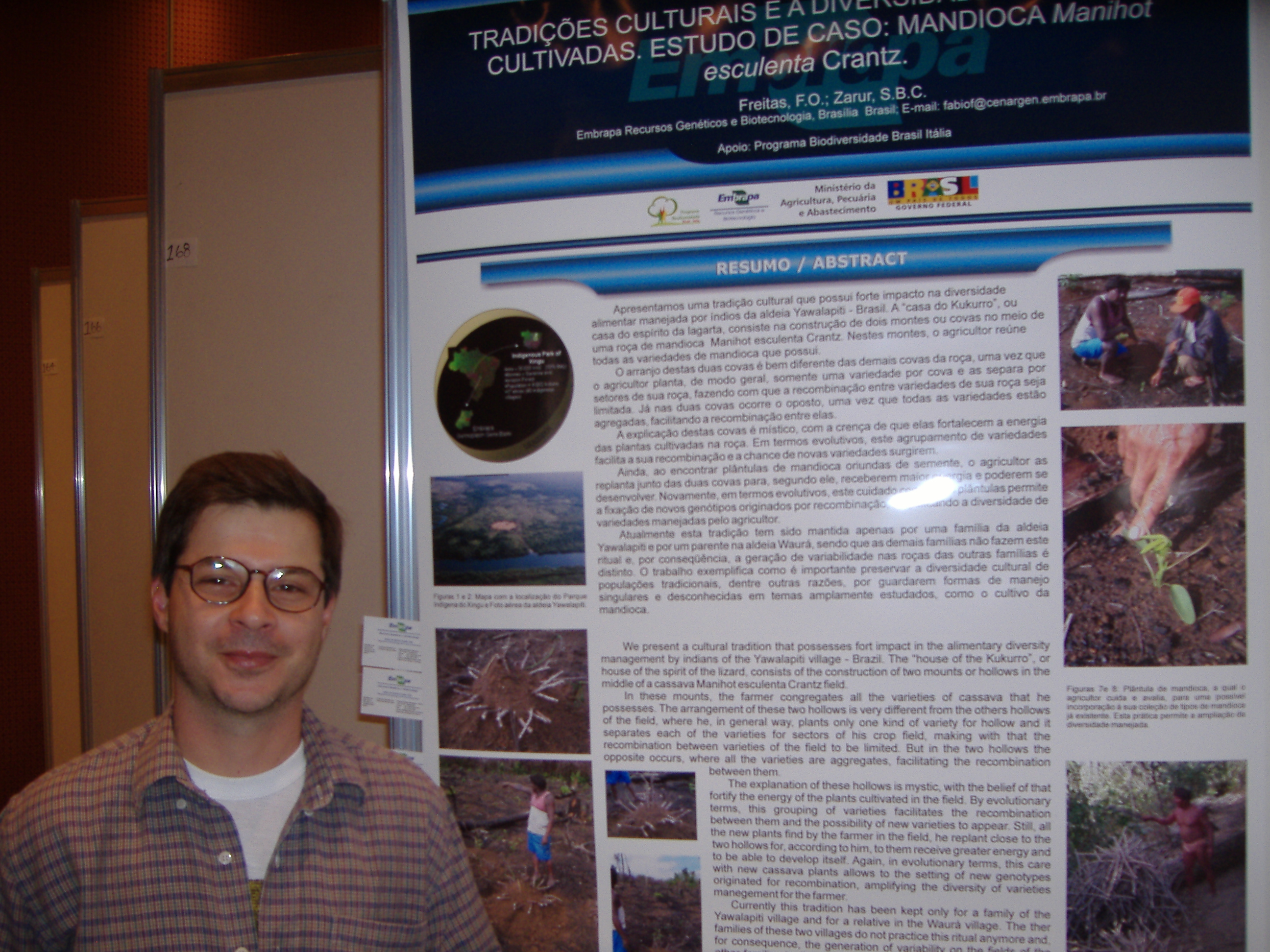I had a chance to roam through the extensive exhibition of posters at SIRGEALC yesterday, and, although many of them were attractive and interesting, one in particular stood out. Actually, Dr Fabio de Oliveira Freitas of the Brasilian plant genetic resources programme (CENARGEN) had two posters up. That’s him in the photo below. One seems to be an update of his thesis work on DNA fingerprinting of archaeological maize remains, which you can read about online. That was interesting enough, but the second poster was even better.

It told a great story from Dr Freitas’ work with a group of Amazonian indians. He’d been visiting a remote area right in the middle of the Amazon for about ten years when he noticed something he hadn’t seen before. In one village, one family had the habit of planting one stake of each of their cassava varieties all together on one mound. Later he found another family in another village doing the same thing. This is apparently an old custom that was more widespread in the past, and that for some reason is declining, although it is supposed to “make the cassava stronger.” Normally, people plant one or more stakes of a single variety in a given mound. But these two families built one somewhat larger, special mound in their field, and planted a specimen of each of their dozen or so varieties in it, so that they grew all together in close proximity, their spindly branches intertwining. That means more crossing among varieties, and more hybrid seedlings on the ground around the mound, for the people to select and nurture new varieties from.
It’s unclear why this agrobiodiversity-friendly ritual is disappearing, and what can be done to stop this happening. But my money is on Dr Freitas to find out and tell us about it soon.